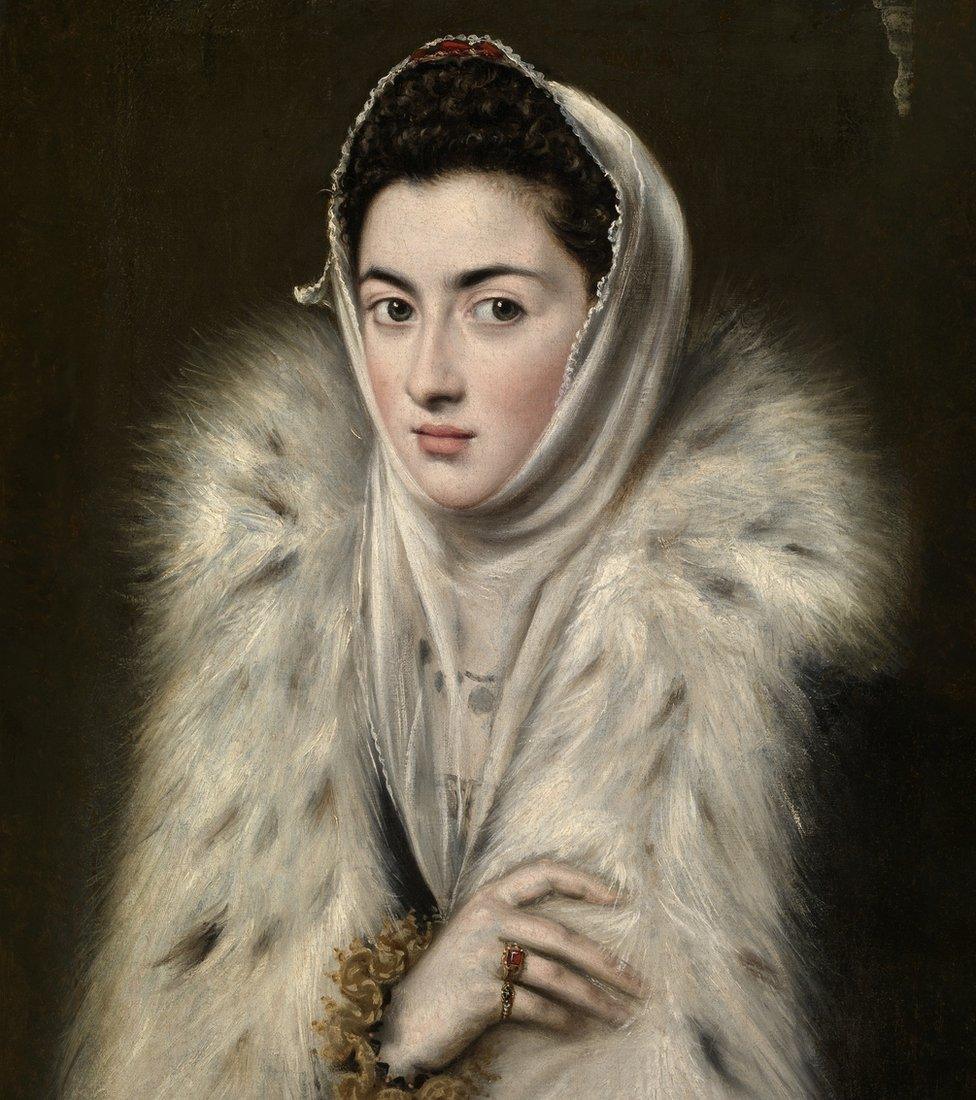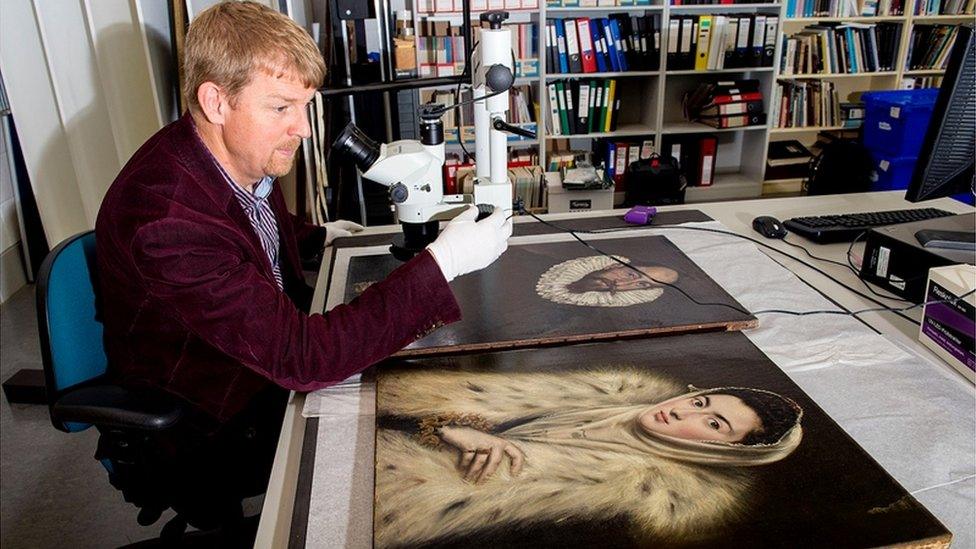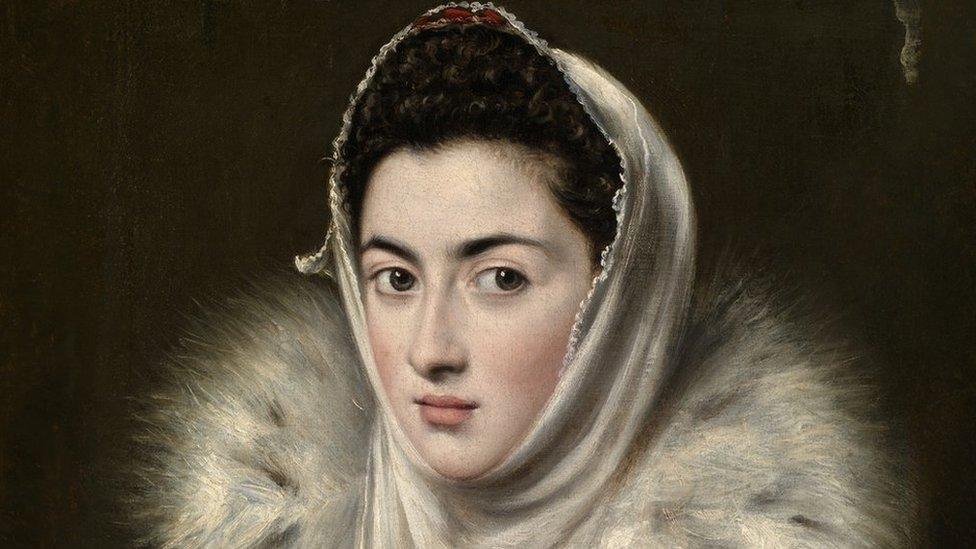Lady in a Fur Wrap: Mystery of Glasgow painting revealed
- Published

Such informal portraits of women in the 16th century are extremely rare
The mystery behind the origins of one of Scotland's best known paintings has been solved.
For many years The Lady in a Fur Wrap was thought to have been painted by 16th Century master El Greco.
However, experts have now undertaken a detailed scientific analysis of the masterpiece, which is owned by Glasgow Museums.
They have established that it was actually painted by Spanish artist Alonso Sánchez Coello.
The identity of the painter has been the subject of ongoing debate for more than 100 years.
Technical examinations were initially carried out by the Museo Nacional del Prado in Madrid in 2014.
Later experts from Glasgow University and Glasgow Museums compared the Lady to works by El Greco and other contemporary artists such as Coello to understand its origins.
Dr Mark Richter, who co-ordinated the research, explained that technical analysis of the painting surface and examination of microscopic samples revealed its composition differed to El Greco's other work.
Experts found the ground layer of the Lady was a light grey, whereas works by El Greco were primed with a layer of brownish-red.

Dr Mark Richter co-ordinated the scientific investigation
Dr Richter said: "This distinctive layer tended to include precious pigments of many different colours, suggesting he used scrapings from his paint palette for this initial layer."
They also used infrared reflectography - a technique which "sees though" paint layers which are impenetrable to the human eye.
It showed that quality of El Greco's initial drawings were "radically different" from the lines visible beneath the Lady in a Fur Wrap.
"Details like this, important for understanding an artist's individual technique, help explain why the Lady in a Fur Wrap is no longer considered to be painted by El Greco," he added.
Features such as dress, jewellery and the status of people represented in portraiture of the time were also studied while working with Spanish scholars.
Who was Alonso Sánchez Coello?
The artist, who lived from around 1531 to 1588, is most closely associated with conventional, formal royal portraits.
However it is now believed he painted very different, informal works such as The Lady in a Fur Wrap.
He was the principal portraitist at the court of Philip II of Spain and was more admired and well known than El Greco at the time.
Dr Hilary Macartney, who led the research at the University of Glasgow, said: "The misattribution of the Lady was instrumental in establishing El Greco's reputation outside Spain in the 19th century.
"Now, at last, it will re-establish the international reputation that Alonso Sánchez Coello deserves."

Dr Hilary Macartney, right, said this discovery will re-establish the international status Coello deserves
The Lady in a Fur Wrap was believed to be an El Greco work after it was displayed at the Louvre in 1838, as part of the collection of French king Louis Philippe I.
It was then bought by Sir William Stirling Maxwell in 1853 and given to the city of Glasgow more than 50 years ago in a collection of Spanish art.
It is currently hanging in Glasgow Museums Resource Centre but is expected to be returned to Pollok House next summer with a fresh interpretation.
- Published15 June 2017
